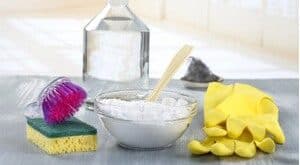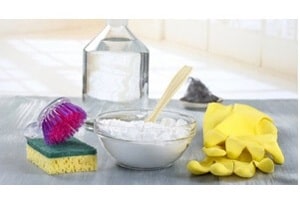 Drains have a direct impact on the hygiene of your home. Besides water harvesting, they will assist to eliminate excess liquids and waste materials. In the process, some residues and scale from hard water are always deposited on your drains. As a result, you should always clean the interior of your drains regularly.
Drains have a direct impact on the hygiene of your home. Besides water harvesting, they will assist to eliminate excess liquids and waste materials. In the process, some residues and scale from hard water are always deposited on your drains. As a result, you should always clean the interior of your drains regularly.
Did you know that cleaning drains can help you reduce blockages, odors and cut on expenses? Many are always reluctant to clean drains because they don’t know how to make the drain cleaners. Are you interested in knowing how to make drain cleaner?
Although there are many drain cleaners on the market, you might be interested to make one of your own. You may be interested to make a small amount for your household or for large-scale industrial use. This is such a feasible idea with a lot of benefits that you should not shy away from.
There are three categories of drain cleaners. You can either settle on biological, chemical or mechanical drain cleaners. Your choice of what drain cleaner to make will depend on the manner you would like to use it.
Making Mechanical drain cleaners
These are drain cleaners that use the force of power and movements to clean drains. There are actually many mechanical drain cleaners that exist in stores ready for use. However, you might be curious to make one. How do you go about it? There are different types of mechanical drain cleaners that you could make.
You can decide to make a drainer that can push or pull using pressure like a plunger. In this case, you will need to make a tool with a large rubber sucker that is powerful enough to push or pull clogs. Nevertheless, any machine that can insert enough pressure into your drains would make a perfect choice.
You could also make drain cleaners that you will actually insert into your drains to clean it. Such drainers should be made with flappy rings around it. Consequently; they will be able to carry dirt from the drains out with it. This would be good for residues like hair in your drains. The top should be made sharp so that it is able to penetrate clogs. In addition, you should make a flexible drain cleaner that is able to get into any shape of drains.
If made properly, mechanical drain tools can make very good drain cleaners. However, they clean unevenly, are time-consuming and tedious to use.
Making Chemical drain cleaners
Chemical cleaners exist in either gel, powder or liquid forms. These are probably the most powerful cleaners out there due to their fast acting nature. Some chemicals are corrosive and would destroy or weaken your drains. Nevertheless, some chemicals are reactive with each other thus would end up releasing fumes. Therefore, most chemicals will come in already manufactured form, ready for use. However, that should not make you shy away from making chemical drain cleaners. Furthermore, what if you intend to process shelved products?
Just as the name suggests, your cleaners can have a chemical reaction with the clogging substance. In the process, they will either take or give electrons to the clogging substance formulating it into a soluble waste. There are three main types of drain cleaners that you can make. You can either settle for oxidizing or an acid drain cleaner. In addition, you could as well go for a caustic drain cleaner. You should always aim at producing one of these drain cleaners.
Oxidizing drain cleaners are generally good with organic clog material on the drains. It should make the clog lose electrons and becomes oxidized. Moreover, it is heavier than water thus can flow through it to reach stains. They should be able to produce heat during the process thus weakening and removing clogs.
On the other hand, acid drain cleaners should be able to release hydroxonium ions that will react with dirt in the drains. In the process, heat is released that consequently melts clogs. However, they are very corrosive thus you should take much care when making such drain cleaners.
Last are the caustic drain cleaners. These are cleaners that contain bases such as caustic potash. They can give electrons to the clogging substance. Meanwhile, their hydroxide ions initiate a reaction that clears the clog. A typical example of this is the homemade drain cleaner that is made from baking soda and vinegar.
If used carefully and properly, chemical drain cleaners can work miracles to your drains. However, they are very dangerous to make thus should be handled carefully.
Making Biological drain cleaners
Are you interested in making eco-friendly drain cleaners? This should be a perfect pick for you. An example of such drain cleaners are enzymes and bacteria.
Do you feel interested in making enzymatic drain cleaners? If so, enzymes are fast acting and substrate specific. Therefore, you should know what dirt you aim to clean. However, they won’t work well for general drain cleaning. In addition, they do not reproduce and are difficult to manufacture. Enzymes are also denatured in extreme temperature and pH.
Bacteria, on the other hand, offer a very good drain cleaning. Besides being stable in large pH range, they can survive extreme temperatures and oxygen levels. They can release different types of enzymes to digest any types of wastes. Most importantly, they are able to multiply and can be destroyed when the drains get clean.
To know more details you can check the below video
Final verdict
Making drain cleaners is not that hard. However, there are many drain cleaner out there already manufactured in the stores. You should, therefore, consider between making a drain cleaner and buying one.
In addition, making most of these drain cleaners is risky. You should consider safer homemade products using common home ingredients. Whatever the drainer you make, a good drain cleaner will always clean your drains with minimum side effects.
